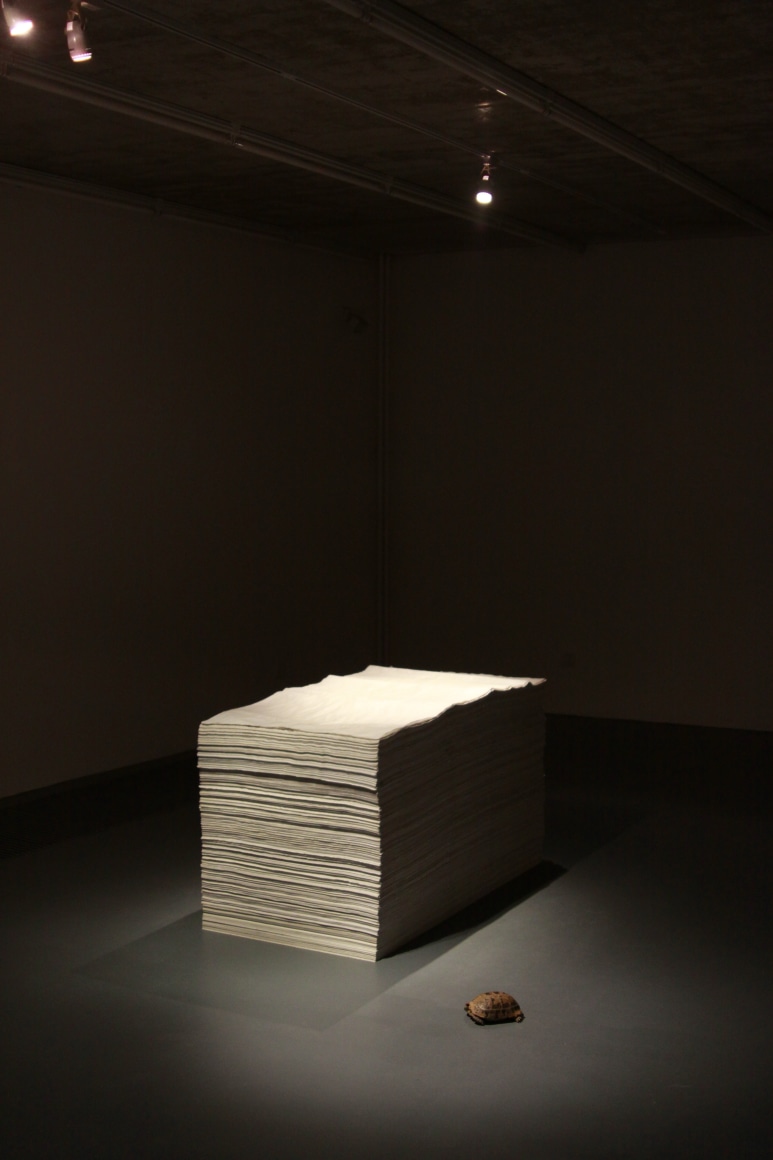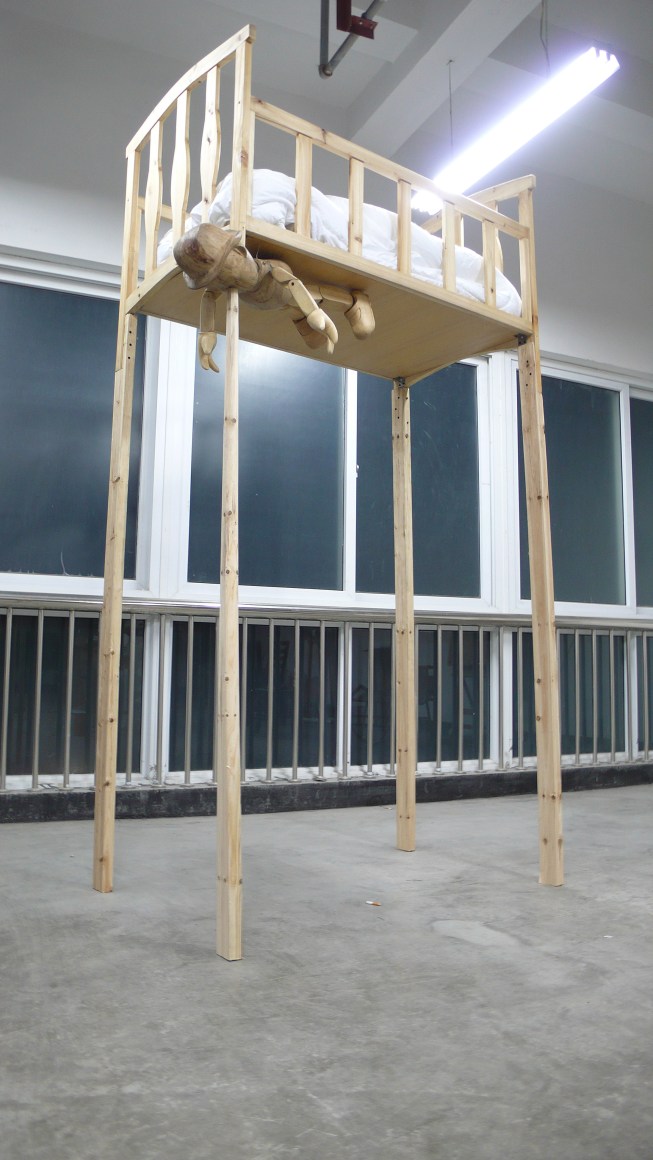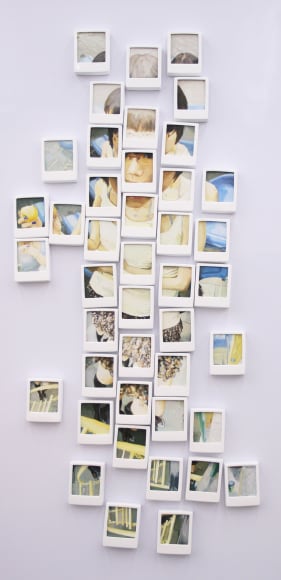Chambers Fine Art Beijing is pleased to announce the opening on November 6, 2008 of C0 2008, the maiden flight of four young artists from China who are exhibiting for the first time in New York. Recognizing that it is impossible for any one person to select promising artists from among the thousands who graduate each year, Christophe W. Mao asked some of China’s leading artists and teachers for their recommendations. Three of the artists – Chen Zhiyuan, Jia Hongyu and Zhao Jingyan – were pupils of Qiu Zhijie in the Department of Experimental Art, China Academy of Art, Hangzhou while Yuan Yuan was a pupil of Yu Hong at the Central Academy of Fine Arts, Beijing.
In the recent biennials and triennials held throughout Asia, painting was hardly to be seen, yet as the recent works of Yuan Yuan demonstrate, there are artists for whom painting is still a meaningful activity. Recently graduated from the Central Academy of Fine Arts in Beijing, Yuan Yuan paints diminutive canvases that reference Polaroid photographs, a photographic technique nearing extinction. Assembling 80 small paintings, she captures the image of an individual section by section while emphasizing the time and labor required to capture the instantaneity of the Polaroid photograph. In another series, she paints the images of vulnerable young people as if reflected in the cornea of a beholder’s eye.
Contrasting with the immediacy of Yuan Yuan’s paintings is Rope by Zhao Jingyan, the visual diary of a lifetime achieved through the braiding of hair as it changes in color and texture with the process of aging. Referring to the ancient Chinese practice of tying knots in a rope to record important events, Zhao compares her work in progress to a “body diary.” In its moving representation of the passage of time, her use of this natural material results in a potent symbol of life’s passing.
Time is also of importance in the works of Chen Zhiyuan and Jia Hongyu. In the photographs of Chen Zhiyuan, gunpowder is used not as a source of spectacular effects as in the work of Cai Guo Qiang but as a source of light that is objectified in the camera lens as it illuminates an artificial mountain. The elaborate set-up is used for inquiries of a philosophical nature.
Equally probing is the installation of Jia Hongyu consisting of two disused airplane engines with slowly moving propellers hanging from the ceiling. Attached to the rear of the engines are lighted ghee lamps which drip into the open hands of the Buddha placed directly beneath. Even the most advanced achievements of humanity, the installation seems to say, return to the equilibrium offered by the powerful message of Buddha.
Chambers Fine Art Beijing is proud to present these recent works by four talented young artists who show the degree to which the preoccupations of artists born in the 1980s – just when Chinese society was beginning its dramatic transformation – differ from those of their immediate predecessors. Rejecting political involvement and social commentary, their work tends to be personal, introspective and reflective rather than extrovert and political.
前波画廊将于2008年11月6日起举办题为《貳零零八的》展览,这也将是参展的四位年轻中国艺术家在纽约的初航。画廊总监茅为清清楚的知道,每年有成千名学生从艺术院校毕业。要从他们中挑选具有发展潜力的新人不是一个人能够完成的。他于是邀请了几位已经颇有成就,同时又在学校任职的艺术家推荐新人。参展的三位艺术家——陈志远、贾宏宇、赵婧妍——从师于邱志杰,在坐落于杭州的中国美术学院综合艺术系学习;苑媛在喻红的指导下在中央美术学院学习油画。
在近年亚洲各地举办的双年展、三年展中,很难看到绘画。但苑媛所创作的作品向我们证明,对许多艺术家来说,绘画仍然是一种有意义、有力量的创作媒体。她用缩小了的画布来模仿正在消失的宝丽莱摄影技术。她将80个这样的小画面放在一起,组织成为一幅肖像,强调了为捕捉宝丽莱的瞬间性所需要的时间和投入。在另一组作品中,她描绘出年轻人在他人的角膜里所反射出的脆弱的形象。
与苑媛作品的直接性形成对比的是赵婧妍的《??》。梦幻般的婴儿床,腿却被加高。匹诺曹的四肢从床沿伸出。艺术家称这件作品的灵感来自婴儿床的象征意义——父母希望的寄托和人生处世的开始——时间也无法抹去儿时的种种恐惧感。
时间也是陈志远和贾宏宇作品中的重要因素。在陈志远的摄影作品中,烟火不是制造壮观场面的手段。在照亮假山的同时,烟火的光亮也成为了照相机镜头的拍摄对象。艺术家利用这件工程较大的作品来探索一个哲学性的问题。
贾宏宇的装置由一万张在酒里浸泡过的宣纸垒叠而成。叠放宣纸的过程和浑暗的展厅内所洋溢的酒香暗示着时间的流逝。一只乌龟在展厅内慢慢的爬动,给感伤的环境增添了意想不到的元素。
前波画廊非常荣幸能够在纽约展出这四位年轻艺术家的创作。这些“80后”所关心的与他们的前辈截然不同——没有政治参与,没有社会关注。相反的,他们的作品更加个人化、内向化、自省化




